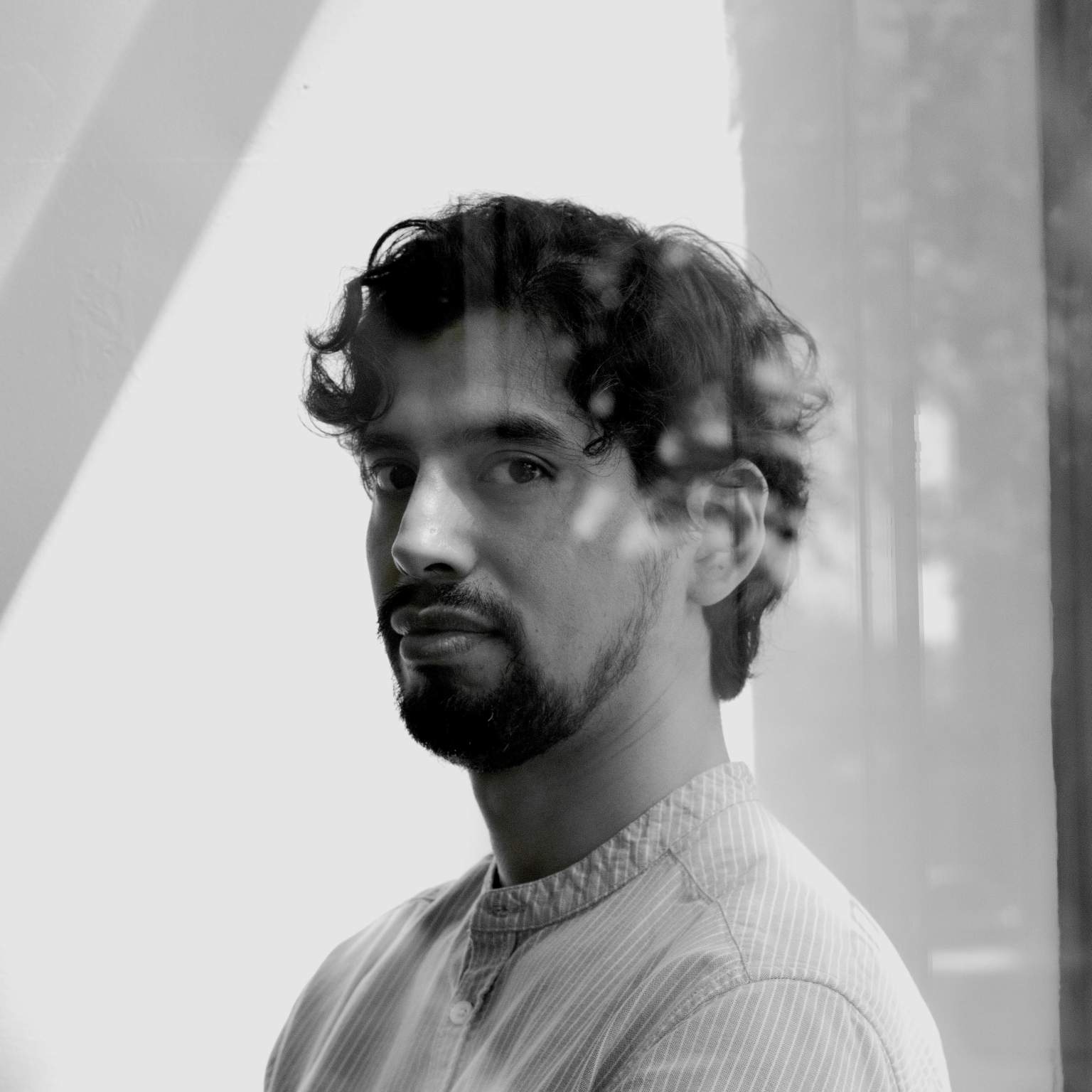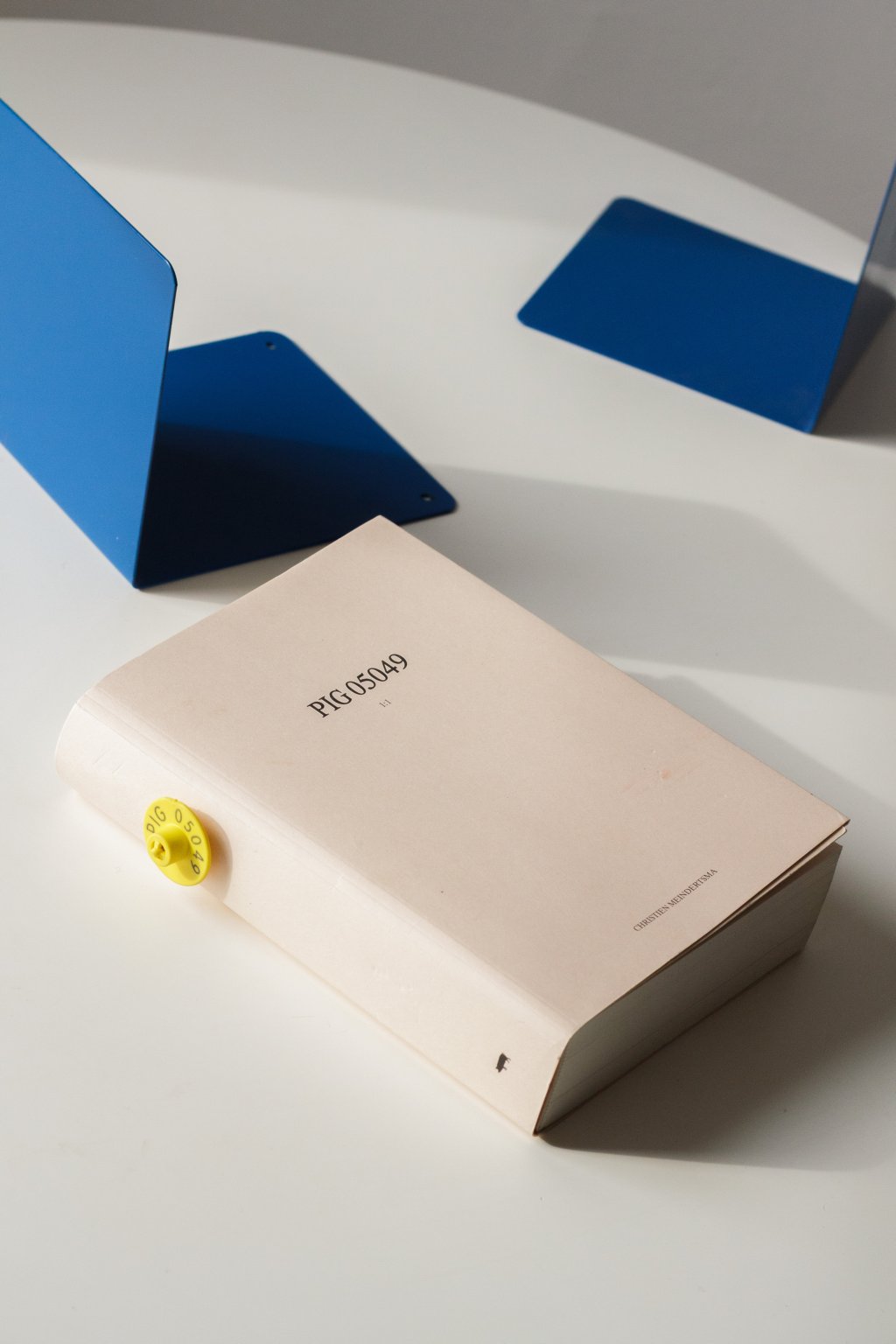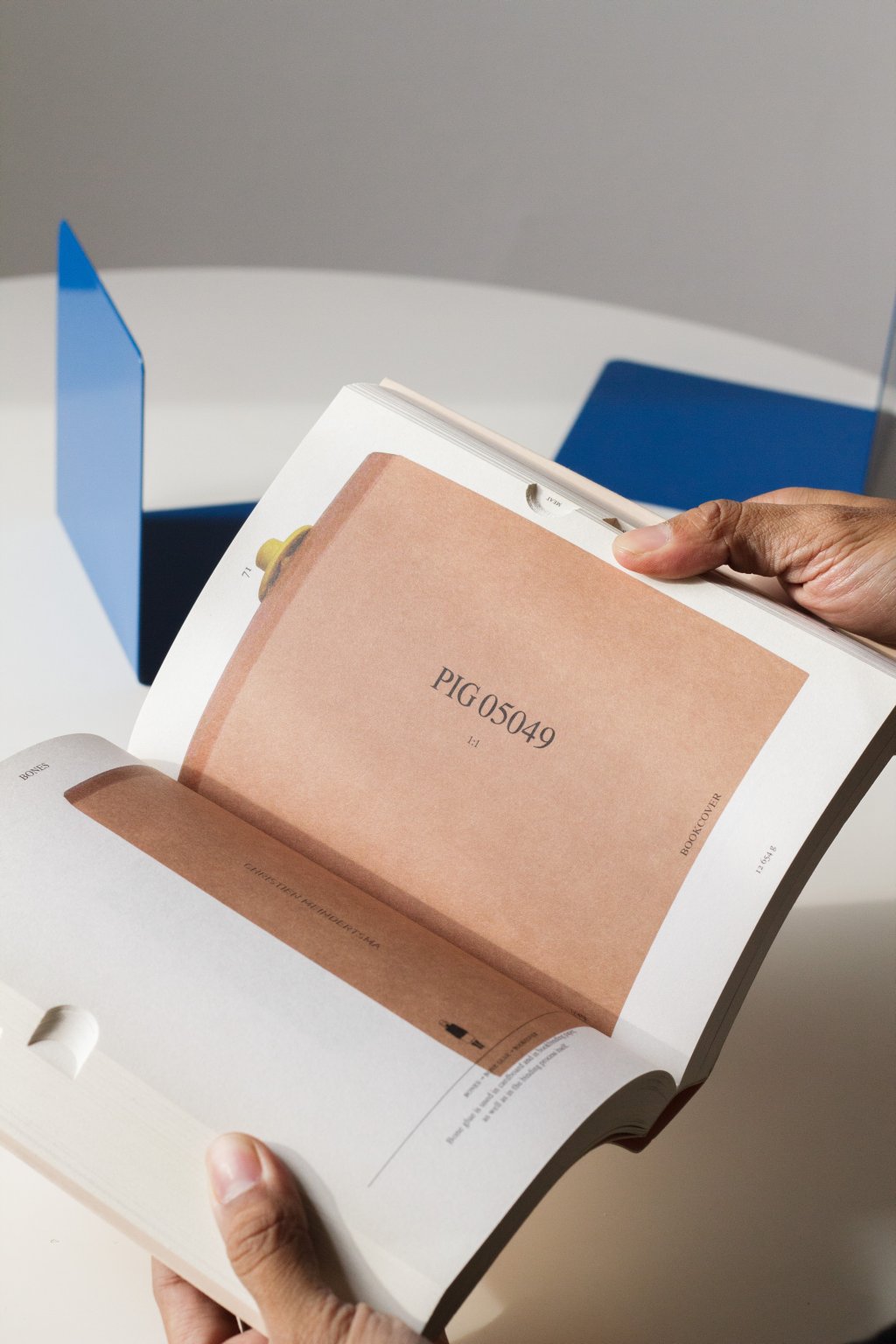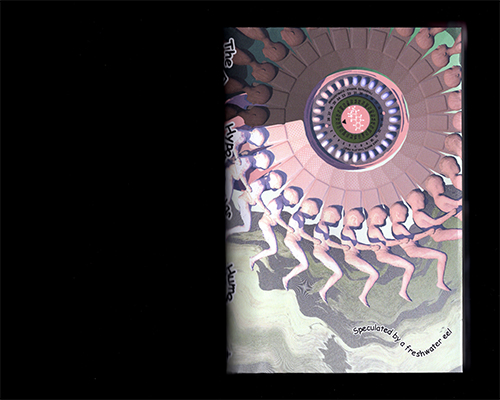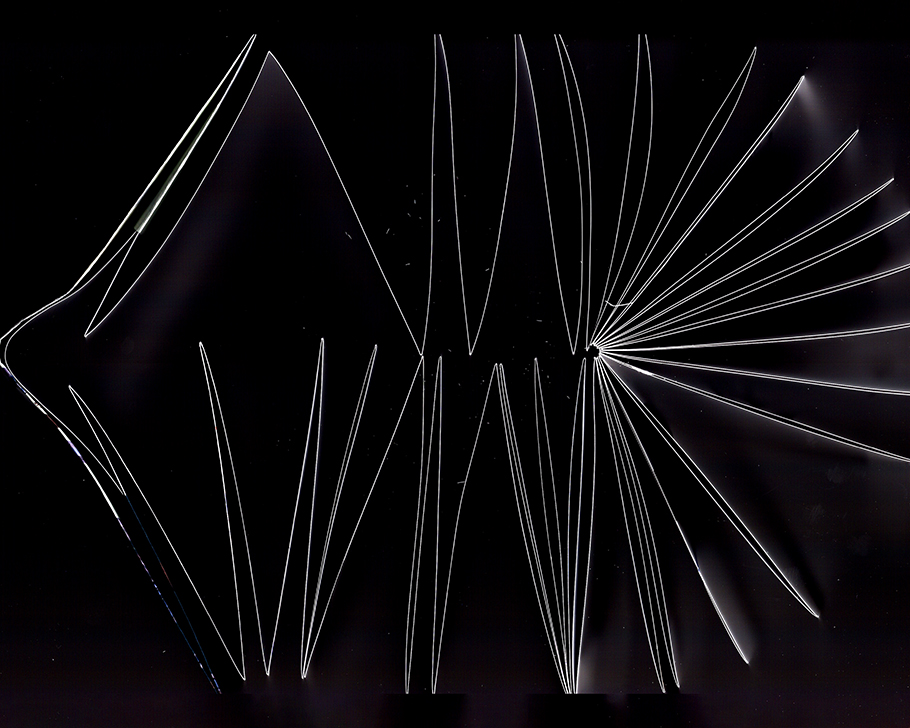Interspecies Library is an independent archive dedicated to the curation of contemporary artists’ books exploring interspecies futures: the manifold unseen and potential relationships that flourish among different lifeforms. A wide variety of printed materials are housed in the archive, including books, pamphlets, zines, posters, ephemera, and other artifacts, which are sourced from artists and independent publishers around the world.
The collection is curated by researcher Oscar Salguero, and is currently located in his apartment in Brooklyn. The Library was founded in 2019 and opened its doors to the public in 2020 with the show Human Nonhuman, and has since acted as a resource and meeting place for cross-disciplinary artists and researchers. Interspecies Library has exhibited at spaces like Center for Book Arts (Interspecies Futures [IF], 2021) and Pratt Institute (Decentering Strategies, 2024), and has facilitated a series of pop-up library events across the US and Europe.
Decentering Strategies
Interspecies Library originated under the premise of an intuition: Could artists’ books document our efforts to decenter the human perspective and attune to more-than-human worlds?
During my time in design school (2009-2012), I began noticing an increasing integration of concepts from posthumanities into artistic and design practices, with terms such as anthropocene, multispecies, object oriented ontology, non-human agency, xenofeminism, and so on. One recurring object I noticed in the conceptual output of these works was the book. Its use as a tool for 'fictioning' and world-building sparked my passion for studying, preserving, and promoting books. After a few years of gathering print materials on subjects concerning climate crisis, speculative technology, queer ecology, nonhuman communication, and more, five core strategies [methods and narratives] of formal experimentation began to emerge, all with the shared objective of disrupting patterns of thought that place humans at the center of our maps of agency and meaning-making.
The principle of decentering itself borrows from the logics of non-human organisms. As a slime mold makes calculations without the aid of a central nervous system, these works move not from a center, but from the peripheries, feeling their way into uncharted terrain. As bacteria blurs boundaries between inner and outer, self and other, these books obscure divisions between human and non-human, present and future, reality and possibility.
The outlined strategies -- Acknowledge, Embody, Extrapolate, Fabulate, Interface -- are by no means comprehensive or solidified; they are, as the subject at hand, fluid, ongoing, and at times overlapping. Together, their emergence signals a growing, species-wide interest in understanding other ways of being and striving for kinship and solidarity with our fellow earthlings.
Strategies
Acknowledge the range of effects caused by interspecies relationships, past and present
The foundation of interspecies care lies in acknowledging the vast network of interactions within which all organisms are interwoven. These artists’ books critically examine contemporary and historical relationships--both overt and subtle, collaborative and exploitative--that entangle beings across species lines.
How can we consolidate complex interspecies histories, which encompass both collaboration and harm, into records, narratives, and archives? How do the stories we tell about other beings affect our collective interest in collaboration and care?
Example: Pig 05049 by Christien Meindertsma (2007)
Embody the properties of organisms and artifacts to transmit sensory information
The sensory quality of the printed object is emphasized in these books, which embody physical properties of non-human organisms, or are themselves artifacts of interspecies engagement. Here, the primacy of narrative is decentered in favor of sensorial information transmission.
What information does material convey that language cannot? What bookmaking techniques can draw the viewer closer to intimacy with other beings?
Example: Sharks and Humans by Jana Uhlig (2020)

Photo credit: Jana Uhlig
Extrapolate interspecies futures based on contemporary technologies
Contemporary trends in technology meet speculation to cast visions of future scenarios, which span a range of perspectives, from cautionary to aspirational. These print materials bend future into present; by adopting the formal authority of documents like corporate catalogs, educational pamphlets, and diaries, they not only imagine, but create the experience of an evolving technological reality in which interspecies relationships proliferate.
What can imagined futures reveal about our present? How do “print fiction” artifacts use belief to affect our perception of time, agency, and possibility?
Example: Aurelia Immortal by Javier Viver (2017)
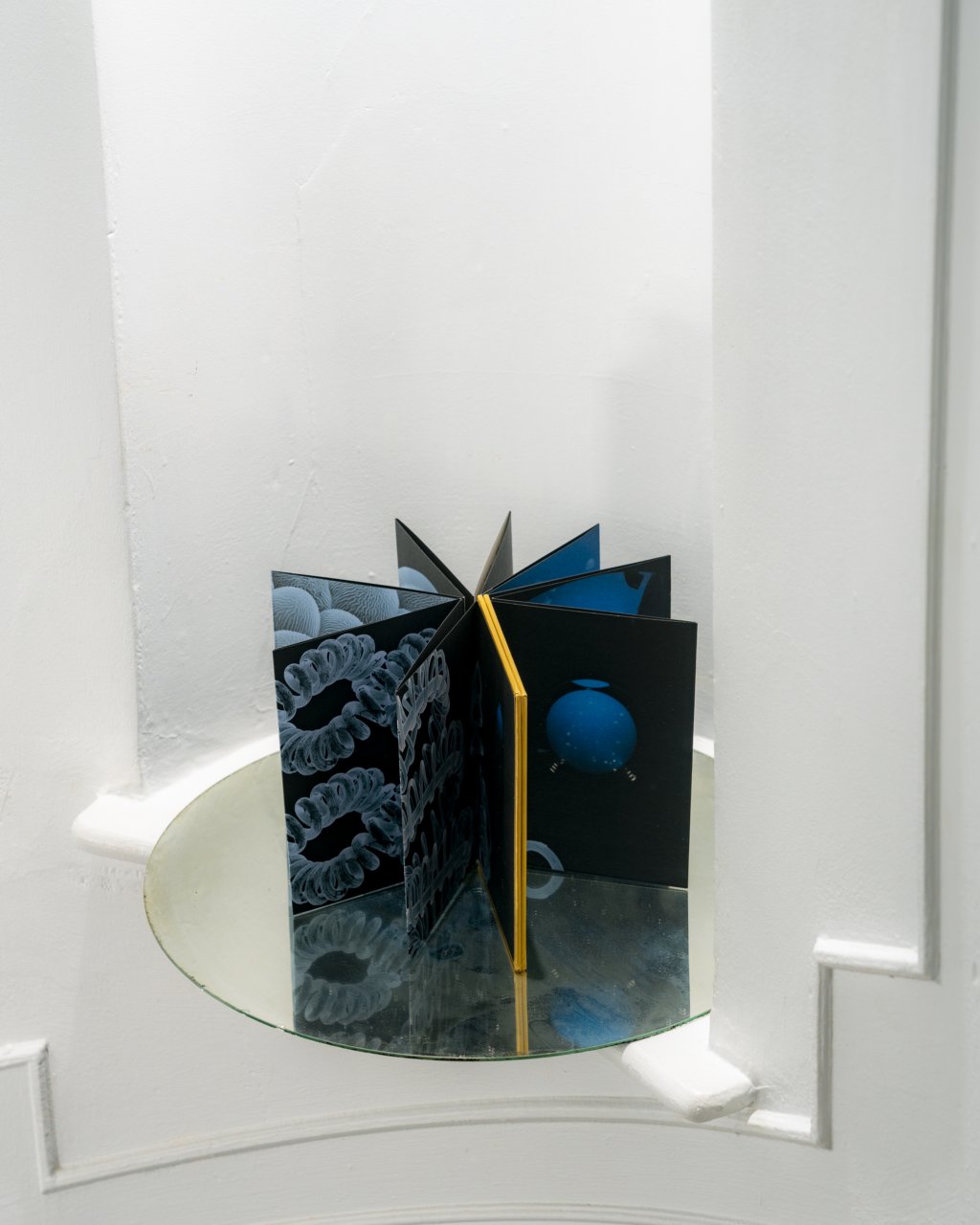
Photo credit: Sean Davidson
Fabulate stories that broaden our view beyond rational boundaries
Fabulation feels towards the very edges of our knowledge, to honor what we can intuit, but cannot directly observe. Traditional approaches to beyond-human contact, such as divination, dream interpretation, and fable-telling gain cross-disciplinary accessibility through formal "print fiction" strategies.
What are the possibilities--and limitations--of imagining the perspective of more-than-human beings? How does fantasy open up possibilities for connection?
Example: The Eel-Centric Hypothetical Atlas on How Humans Have Sex by Noam Youngrak Son (2022)
Interface species with diverse language systems; establish common ground through experimental communication
Experiments in interspecies communication encourage us to reframe non-human beings from objects of study to active collaborators in the creation of meaning. These projects utilize deep listening, at times aided by technologies like amplifiers and EEG, to extend our sensory capabilities, amplifying signals previously undetected or overlooked.
How can we communicate with other species on their terms? How can methods of communication that transcend language be recorded and archived?
Example: Book of Gnaws by Marianne Hoffmeister (2020)
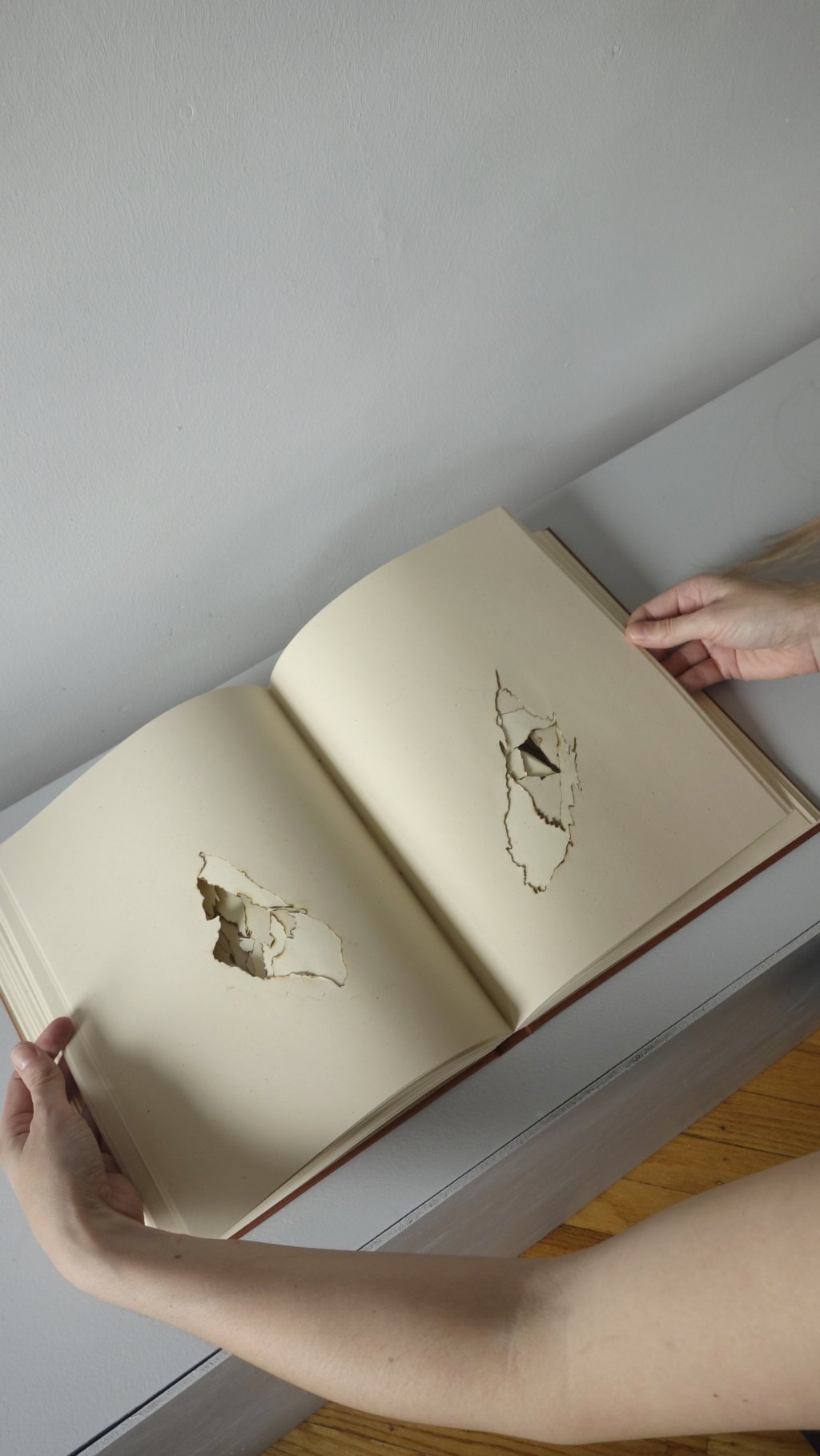
Photo credit: Oscar Salguero
Thanks to Gwen Freudenheim for their help editing this text.




